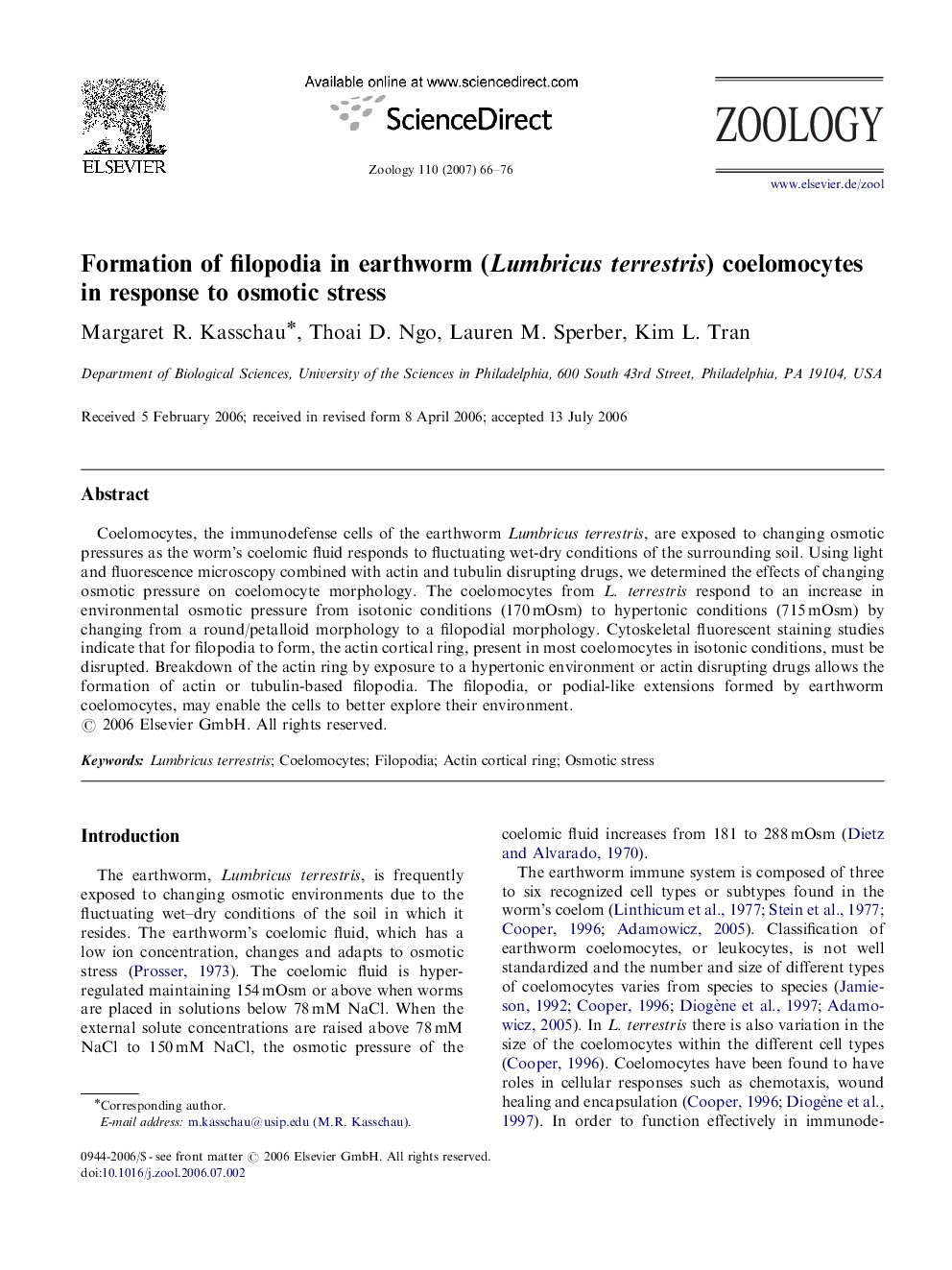| کد مقاله | کد نشریه | سال انتشار | مقاله انگلیسی | نسخه تمام متن |
|---|---|---|---|---|
| 2791464 | 1154884 | 2007 | 11 صفحه PDF | دانلود رایگان |

Coelomocytes, the immunodefense cells of the earthworm Lumbricus terrestris, are exposed to changing osmotic pressures as the worm's coelomic fluid responds to fluctuating wet-dry conditions of the surrounding soil. Using light and fluorescence microscopy combined with actin and tubulin disrupting drugs, we determined the effects of changing osmotic pressure on coelomocyte morphology. The coelomocytes from L. terrestris respond to an increase in environmental osmotic pressure from isotonic conditions (170 mOsm) to hypertonic conditions (715 mOsm) by changing from a round/petalloid morphology to a filopodial morphology. Cytoskeletal fluorescent staining studies indicate that for filopodia to form, the actin cortical ring, present in most coelomocytes in isotonic conditions, must be disrupted. Breakdown of the actin ring by exposure to a hypertonic environment or actin disrupting drugs allows the formation of actin or tubulin-based filopodia. The filopodia, or podial-like extensions formed by earthworm coelomocytes, may enable the cells to better explore their environment.
Journal: Zoology - Volume 110, Issue 1, 1 February 2007, Pages 66–76